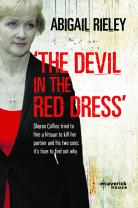When I was a child my Barbie was normally buried somewhere in the back garden. I had decided at a very young age that Barbie was the kind of woman who would “come to a bad end”. Sindy usually investigated her disappearance – together with my bright red teddy bear Gooby. As a girl child in the 70s I had obviously absorbed the prevailing cultural misogyny and decided that my fashion dolls were inherently bimbos. I confess, as a 6-year-old, Second Wave feminism didn’t really appeal to me. I had absorbed my mum’s disparaging comments when I received my Barbie doll. She had noticed her large breasts, tiny feet and long blonde, perfect hair and had judged. Sindy was considered far more suitable for me but I wasn’t that gone on her either. She played second fiddle to the bear who was my constant companion. Sindy certainly had more approachable proportions but she exuded a Goody Two-shoes vibe that I found vaguely unnerving. My doll was a ballerina and seemed far more concerned with character building extra curricular activities. I was sure Barbie got asked to a lot more parties – which was probably the whole problem.
The only fashion doll I played with consistently as a kid was Palitoy’s Pippa. This was mainly because she was easily portable at only 6.5 inches or 16.5 cm tall. She was also more easily available with different hair colours. My Pippa was actually a Dawn doll with auburn, curly shoulder length hair. I remember picking her out myself one day in Chester and I had specifically picked her because she wasn’t blonde. She and her orange bridesmaid dress – whose purpose completely passed me by – were carried around in pockets and bags for years. She was a convenient plaything who could get into small places. I never really saw other clothes for her, although I did eventually acquire a spare yellow dress which seemed more practical at least.
Even from this young age I had decided that being too focused on fashion was a BAD thing. This despite the fact that to this day I navigate my way through episodes of Sapphire and Steel through Sapphire’s costumes. I just felt quite strongly, without really knowing why, that you couldn’t be serious or bookish – and I was both of those things, and like pink quite so much. I saw both Barbie and Sindy as not the kind of girls I would be friends with. Dawn, with her darker hair, seemed far more approachable. I’m sure this probably says something about my autistic childhood but I’m not sure what.
By the time Aqua released Barbie world in 1997 I was firmly unpink. I put that song firmly in the same pigeon hole as Achey Breaky Heart and Danny Boy, the pigeon hole that would make me switch channel in a flash. My mind had not been changed by the time the Barbie film was announced.
So now we all really do live in a Barbie World® and Barbie is now a feminist. Barbie is the biggest grossing film directed by a woman (can’t help feeling that milestone might have hit better for another film but we’ll take what we can get) and just keeps growing. More movie tie-ins are announced on a daily basis – the real winners in all this are the marketing bods as this Vox article examines. Mattel has seen the magic formula and slated a deluge of other toy inspired films. Capitalism just keeps marching on.
And that’s what always bugged me about Barbie. It was always about the money. I tended to inherit my dolls and the clothes I had for them were either made for me by friends and relatives or I swapped them at school. But even back then, I was aware that there were some things you couldn’t hand make. Star Wars toys were the big thing and Dukes of Hazzard, and Evil Knievel etc etc etc. We were all far more pop culture aware than our parents might have been and of course, things haven’t changed and have only speeded up.
Back in the 2000s it became clear that pink was the only colour that was deemed acceptable by the marketing bods when it came to little girls. I’ve written about the subject many times, this 2013 post is typical of my views which I’m not going into again. Things might have got a little less so but I can’t see that diversity staying long if Mattel get there way. Don’t get me wrong, I’m looking forward to finally getting round to seeing both Barbie and Openheimer and I fully expect Barbie to be the more fun movie going experience of the two. But something in my gut still wants to bury Barbie in the back garden.



























